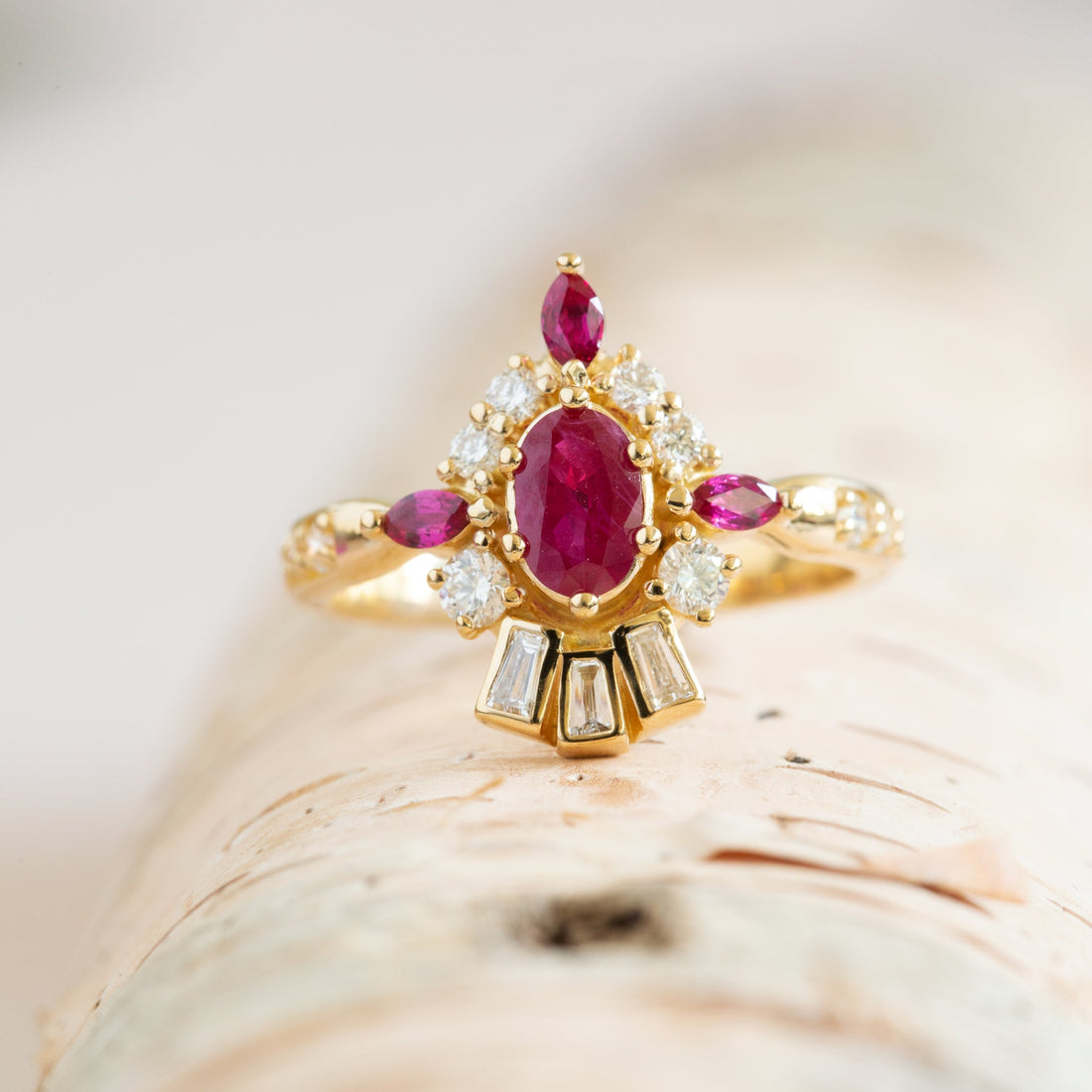
Is it possible to source ethical rubies?
Yes! If you have your heart set on a ruby, W.R. Metalarts can source one you can be proud of! The Nyala Ruby® is mined in the Chimwadzulu mine in Malawi. These Fairtrade Level 1 stones are 100% traceable back to this one mine, which adheres to strict Fair Trade Gems® standards for workers and the environment, and are cut in-house by our supplier. We can also source lab-grown rubies, which are chemically and visually identical to mined rubies, and are the most budget-friendly!

More on Our Commitment to Ethical and Sustainable Sourcing: W.R. Metalarts strives to know the full story of the materials we use in our jewelry. We are committed to supporting artisanal miners and mining communities, promoting healthy and safe working conditions, and avoiding environmentally destructive practices. We are dedicated to deepening our understanding and working to address the historical and ongoing harm of the jewelry industry on indigenous communities and communities of color all around the world. We do not claim to have all of the answers; we are constantly evaluating our practices as we gain a more nuanced understanding of our complex industry. Transparency is critical so that you, our clients and collaborators, can trust that we’ve done all we can to create the most beautiful jewelry - not just the end result, but beautiful at every step of the journey.
The way that we back up these values is to do our homework, putting our suppliers through rigorous vetting processes. We don’t take our vendors at face value when they say a stone is “conflict-free” or “sustainable;” we push them to give us the whole story about the journey of a stone and if they are not able to back up their claims of “ethics'' with sources or credentials, we won’t work with them. We source directly from local cutters and miners, when possible, which is one way to ensure ethical, responsible, and sustainable sourcing, practices, and conditions. It takes time and diligence to find suppliers that we trust, but once we find them, we forge incredible relationships built on our shared values of transparency, accountability, and doing good.




